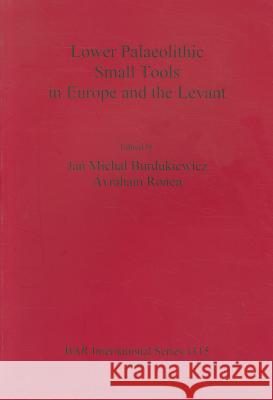Lower Palaeolithic Small Tools in Europe and the Levant » książka
Lower Palaeolithic Small Tools in Europe and the Levant
ISBN-13: 9781841714936 / Angielski / Miękka / 2003 / 239 str.
Fifteen papers taken from a workshop held in Liege in 2001 aimed at bringing together those researching microlith industries from across Europe. Whilst new ideas and new data are presented in most papers, the most significant outcome of this exchange of ideas was the opportunity to assess technological and stylistic similarities between assemblages among case studies from Poland, Germany, Hungary, Israel, the Czech Republic, Slovakia and China. Papers in English.
In accordance with European Science Foundation regulations, Exploratory Workshops with a maximum of 20 participants were designed to encourage researchers from across Europe to put forward innovative and creative ideas in European research. The workshop ‘Lower Palaeolithic small tools in Europe and the Levant’ was accordingly held in Liege (Belgium) between September 3 - 7, 2001 (in cooperation with the XIVth Congress of the International Union of Prehistoric and Protohistoric Sciences). Since the famous1960s’ excavations in Vértesszõlõs (Hungary), Lower Palaeolithic assemblages of very small tools have been known in Europe and referred to as microlithic assemblages. They were so different from the known European Lower Palaeolithic assemblages, that the Hungarian archaeologist L. Vértes introduced the new generic name ‘Buda Industry’, and sparked a wider interest in this whole area of study. This volume (bringing together the current knowledge on a topic that includes the oldest hunting weapons known in the world: the Schöningen (Lower Saxony, Germany) wooden spears) includes the 15 papers that were prepared for the Workshop. Taking the main theme of the Workshop (the comparative technological and stylistic analysis of small tool assemblages in Europe and Asia) as a starting point, the 15 papers presented here (ordered spatially from west to east and temporally from the Lower to the Middle Palaeolithic: c. 1000 – 300 kyr BP), as well as discussing the “Buda Industry”, also extend to cover such areas of interest as the “Lower Palaeolithic Microlithic Tradition”, the “Colombanian”, the “Archaic Industries” or “Taubachian”, etc.











